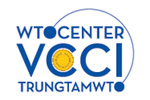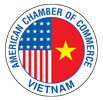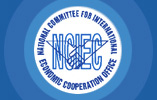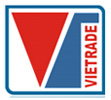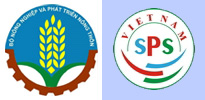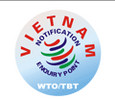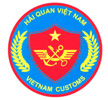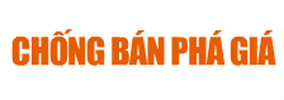
Talking to reporters from Customs News, Nguyen Ton Quyen (photo), Deputy Chairman and General Secretary of Vietnam Timber and Forest Product Association said that the EVFTA will create many opportunities for Vietnam’s wood industry, even raising export turnover to US$1 billion by 2020.
Could you tell us briefly about the import and export of timber and timber products between Vietnam and member countries in the EU?
The EU has always been an important export market for the timber industry because most of the export enterprises to the EU are Vietnamese enterprises. The EU is the fourth largest export market of Vietnam. Export value to the EU has always remained stable and increased slightly in recent years. The EU imported products from Vietnam are mainly wood products of HS code 94.
In 2018, export of timber and timber products to the EU reached US$759.07 million, up 3% compared to 2017. Of which, Britain is the largest importer of wood and wood products. In 2018, exports to this country accounted for 36.2%, reaching US$289 million, followed by France with US$130 million and Germany with US$107 million.
In terms of imports, the EU is one of the main markets that supplies wood resources for Vietnam. Material from the EU is assessed to have a very low level of risk. The main import items include: sawn timber, round wood and veneer. In 2018, Vietnam imported US$246.47 million of timber and wood products from the EU, increasing by 5% compared to 2017. The imports of wood from the EU are mainly oak, ash, ramie and walnut. This is the second largest legal timber supply for Vietnam after the US.
What do you think about the great opportunities for Vietnam's wood processing and exporting sector when the EVFTA is signed?
The EVFTA opens many opportunities for the wood processing and exporting industry. In terms of exports, the wood processing industry will enjoy 0% tax rate for at least 90 wood products exported from Vietnam. For many years, timber trade between Vietnam and the EU has accounted for about 12-15% of the total export turnover of timber and wood products, averaging about US$650-700 million annually. The EVFTA will create a breakthrough for exports of wood and wood products to this market, with a forecast of about US$1 billion by 2020.
In fact, the EU demand of wood products is about US$80-85 billion a year. That number is much larger than Vietnam's wood export turnover to the EU, so the opportunities in the long term are quite large.
With the EVFTA, in addition to the tax rate of 0%, in terms of imports, businesses will find it easier in purchasing machinery and equipment, and learning wood processing technology as well as the level of corporate governance from the EU to improve productivity and quality of its products. At the same time, goods and services from the EU will create pressure for Vietnamese enterprises to strive to improve their competitiveness.
In addition to benefits from investment, the EVFTA creates a more open and convenient investment environment for Vietnam that will attract more FDI from the EU to Vietnam, especially in the wood industry. Under the implementation of commitments in the EVFTA on institutional issues and legal policies, Vietnam’s business environment and policies and law will change and improve in accordance with international practices, creating more favorable conditions for businesses.
Besides opportunities, what are the outstanding challenges that processing and exporting enterprises have to face when Vietnam joins the EVFTA?
First of all, rules of origin can be difficult to meet. Normally, in order to enjoy FTA tariff preferences, goods must meet a certain amount of internal content (materials originating in the EU and/or Vietnam).
The EU is a difficult market. Customers have high requirements for product quality. The EU's mandatory requirements for food hygiene, labeling, and environmental protection are very strict and not easy to meet. Therefore, despite the benefits of tariffs, Vietnamese goods must also improve quality in order to overcome these barriers.
In addition, the EVFTA poses a risk of trade defense measures. Normally when tariff barriers are no longer effective tools to protect, enterprises in the import market tend to use anti-dumping, anti-subsidy, or safeguard measure to protect themselves. The EU has used these tools many times.
Besides, the challenge also comes from competitive pressure from EU goods and services. Opening the Vietnamese market for the EU goods and services means that Vietnamese businesses will have to face more difficult competition in the domestic market. In fact, this is a huge challenge, because EU enterprises have a better advantage than Vietnamese enterprises in terms of competitiveness, market experience as well as the ability to utilize FTAs. However, Vietnam's open-door commitment has a roadmap, especially for sensitive products, so the EVFTA is also a reasonable opportunity and pressure for Vietnamese enterprises to adjust and change their business and improve their competitiveness.
Representing the voice of wood processing and exporting enterprises, do you have any proposal to the Government as well as related ministries and agencies to help businesses in the industry make better use of opportunities from new generation of FTAs like the EVFTA?
I propose the Government and ministries and agencies pay attention and support the Vietnamese timber business community to concentrate resources on technological innovation, especially with specific plans to implement product design and build Vietnam’s wood product brand. In addition, I also propose the Government and related ministries and agencies to soon issue legal guiding documents on the implementation of agreements such as the Comprehensive and Progressive Agreement for Trans-Pacific Partnership (CPTPP) and the EVFTA in 2019. This helps the business community have a basis to build business development plans in the future.
Thank you, Sir!
Nguyen Xuan Dinh - Vice Chairman of Vietnam Farmers Association:
Need to improve production capacity for farmers In order for farmers to actively adapt to opportunities as well as challenges that FTAs bring, functional agencies need to strengthen information for businesses and farmers; improve production skills and qualifications, comply with regulations on agricultural production practice in using inputs, ensure food hygiene and safety. This process should focus on capable farmers, who have long-term aspirations for agriculture to form a professional farmer team. In addition, it is necessary to create a mechanism to form and develop new-style cooperatives, mobilize the participation of households and farmers, create land mechanisms and improve production planning and governance capacity of cooperative leaders.
The Vietnam Farmers' Association, with the advantage of a "centipede" system to the village, will make efforts to propagate to farmers about the opportunities and challenges from the FTA.
Pham S - Vice Chairman of Lam Dong Provincial People's Committee:
The promotion program should divide into groups of provinces with similar development levels and prioritize to support potential small businesses Despite achieving some positive results in the process of international economic integration, Lam Dong province also faces some difficulties and obstacles when implementing FTAs that Vietnam has signed such as: there is still a lack of experts who have knowledge about FTAs, international law, foreign markets. This greatly affects propaganda. Besides, Lam Dong enterprises mostly have small scale and limited financial resources. Therefore, the number of enterprises participating in overseas trade promotion programs is very limited; the export market is still small, especially the agricultural product export market has been slowly expanded.
In the future, Lam Dong proposed the Central Government support local firms in integration work such as: hold human resource training for integration; regularly update information on foreign markets, regions and industries; support in investment promotion. In particular, the promotion program should be divided into provincial groups with similar development levels and priority levels of support for small businesses with the potential to facilitate small businesses.
By Duc Quang (recorded)
Source: VCN
Key words: EVFTA, increase, export, timber, EU, US$1 billion






